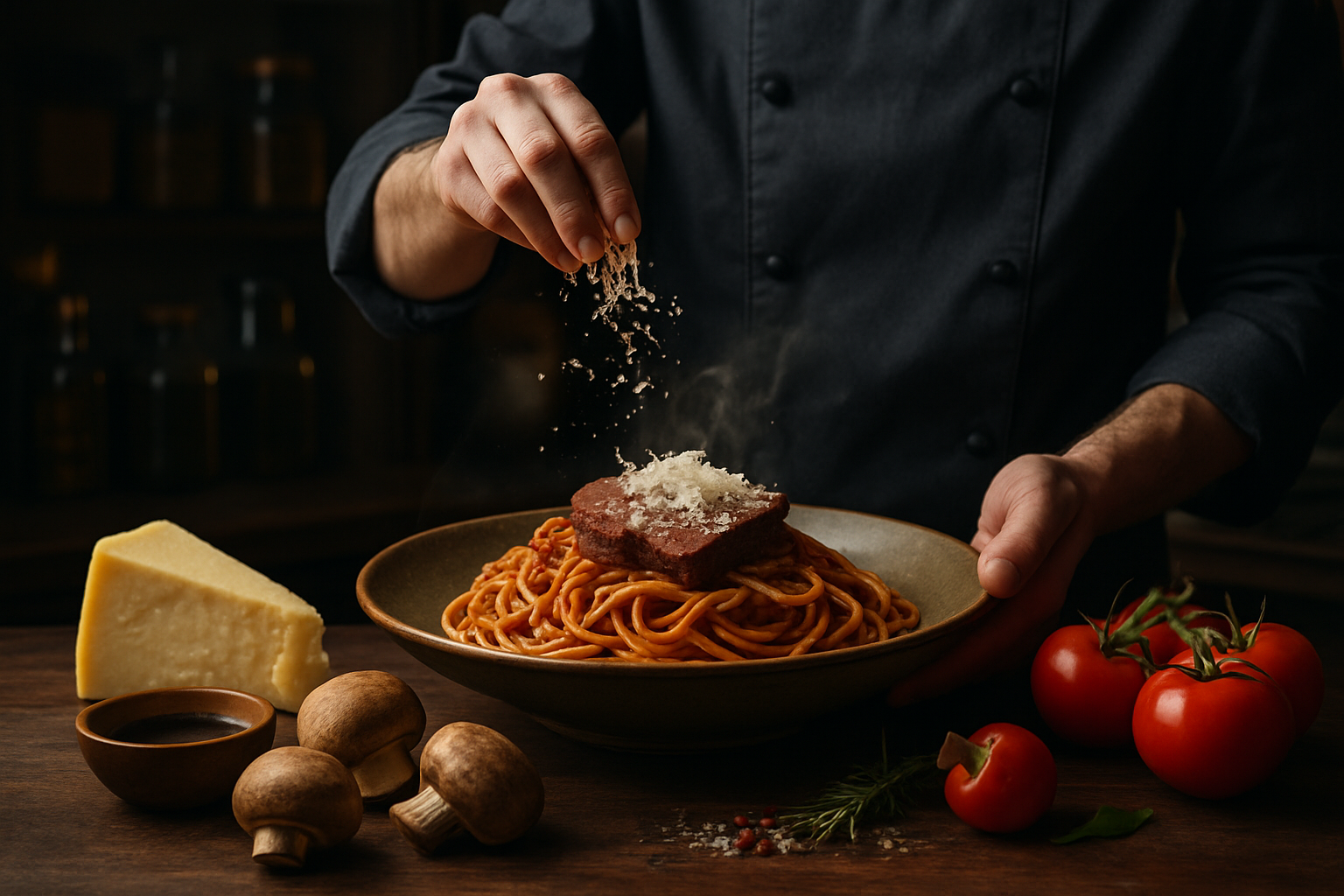Umami Revolution: Unlocking the Fifth Taste in Home Cooking
Savory, rich, and deeply satisfying – umami is the elusive fifth taste that's captivating food lovers worldwide. Beyond sweet, sour, salty, and bitter, umami adds depth and complexity to dishes, elevating everyday meals to culinary masterpieces. Join us on a journey to explore this flavor sensation and discover how to harness its power in your own kitchen.

Umami-Rich Ingredients to Stock in Your Pantry
To embark on your umami adventure, start by stocking your pantry with key ingredients that pack a savory punch. Aged cheeses like Parmesan and cheddar are excellent sources of umami, thanks to their high glutamate content. Dried mushrooms, especially shiitake, are umami powerhouses that can be rehydrated and used in various dishes. Tomato paste, a concentrated form of tomatoes, is another umami-rich ingredient that can add depth to sauces and stews. Soy sauce and fish sauce are liquid umami boosters that can instantly elevate the flavor profile of many dishes. Seaweed, particularly kombu, is a staple in Japanese dashi and can be used to infuse broths with umami goodness. By keeping these ingredients on hand, you’ll always have the tools to create umami-rich meals at a moment’s notice.
Umami-Boosting Techniques for Everyday Cooking
Incorporating umami into your daily cooking doesn’t require complex techniques or exotic ingredients. One simple method is to caramelize onions slowly, which concentrates their natural sugars and enhances their umami qualities. Roasting vegetables, especially tomatoes and mushrooms, intensifies their flavors and brings out their umami potential. When making soups or stews, consider adding a Parmesan rind during the simmering process to infuse the broth with savory depth. For vegetarian dishes, nutritional yeast can provide a cheesy, umami-rich flavor without any animal products. Fermenting vegetables, such as making your own kimchi or sauerkraut, can also create umami-packed condiments to enhance various meals. By mastering these techniques, you’ll be able to elevate even the simplest dishes with layers of savory complexity.
Umami in Global Cuisines: A Flavorful Journey
Umami plays a crucial role in many global cuisines, often defining their signature flavors. In Italian cooking, the combination of tomatoes, aged cheeses, and cured meats creates a harmonious umami symphony. Japanese cuisine relies heavily on dashi, a umami-rich stock made from kombu and bonito flakes, as a foundation for many dishes. Chinese cuisine incorporates umami through fermented soybean products like doubanjiang and black bean sauce. In Southeast Asian cooking, fish sauce is a key umami component that adds depth to curries and stir-fries. By exploring these global flavor profiles, home cooks can draw inspiration and learn new ways to incorporate umami into their own culinary creations. Experimenting with different umami combinations from various cuisines can lead to exciting fusion dishes that blend the best of multiple culinary traditions.
Balancing Umami: Creating Harmony on the Plate
While umami can greatly enhance a dish, it’s important to balance it with other flavors to create a well-rounded meal. Too much umami can overwhelm the palate and make a dish feel one-dimensional. To achieve balance, consider pairing umami-rich ingredients with acidic elements like citrus fruits or vinegar. This contrast can help cut through the richness and provide a refreshing counterpoint. Adding texture through crisp vegetables or crunchy toppings can also provide a pleasing contrast to umami-laden dishes. When developing recipes, think about how umami interacts with other taste elements – a touch of sweetness or a hint of bitterness can complement and enhance the savory notes. By mastering the art of balancing umami with other flavors and textures, you’ll be able to create dishes that are not only satisfying but also complex and nuanced.
Umami Tips & Facts
• Umami can help reduce sodium intake by providing flavor without extra salt.
• Breast milk is naturally high in umami, which may explain why humans are drawn to this taste.
• Aging, fermenting, and curing processes often increase the umami content in foods.
• The umami taste can be enhanced by combining different umami-rich ingredients.
• Umami is detected by the entire tongue, not just specific areas like other tastes.
• Some umami-rich foods, like mushrooms, can actually enhance the flavors of other ingredients in a dish.
Embracing umami in your cooking opens up a world of flavor possibilities. By understanding the science behind this fifth taste and learning to incorporate umami-rich ingredients and techniques, you can transform your home-cooked meals into restaurant-quality experiences. Remember to balance umami with other flavors and textures for truly harmonious dishes. As you continue to explore and experiment with umami, you’ll discover new ways to satisfy your taste buds and impress your dinner guests. Let the umami revolution begin in your kitchen!





